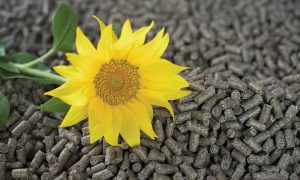Sunflower Pellets in Power Plants: A Sustainable Energy Revolution
In the quest for cleaner and more sustainable energy sources, sunflower pellets have emerged as an unexpected yet highly promising solution. While these pellets are commonly associated with residential heating and industrial processes, they are increasingly finding their place in power plants. This article explores the remarkable potential of using sunflower pellets as a renewable fuel source in power generation facilities.

The Rise of Sunflower Pellets
- Abundance and Renewability
Sunflowers are renowned for their vibrant blooms and the seeds used to produce oil. What often goes unnoticed is the abundance of biomass left behind in sunflower fields after harvest. Stalks, leaves, and shells can be efficiently processed into high-quality pellets, turning a waste product into a valuable resource.
- Low Carbon Footprint
One of the most compelling advantages of sunflower pellets as a fuel source is their minimal impact on the environment. When burned, they release significantly fewer greenhouse gases compared to fossil fuels, helping power plants reduce their carbon footprint and meet emissions reduction targets.
- Cost-Effective Energy
Sunflower pellets are cost-competitive with other biomass fuels, making them an attractive option for power plants seeking sustainable energy solutions. Their affordability, coupled with their environmental benefits, positions them as a viable alternative to coal and natural gas.
Sunflower Pellets in Power Generation
- Co-Firing with Coal
Many power plants are transitioning to co-firing, a process where sunflower pellets are mixed with coal in existing combustion systems. This allows for a gradual shift towards renewable energy while maximizing the use of existing infrastructure.
- Dedicated Biomass Power Plants
Some power plants are entirely dedicated to biomass combustion, including sunflower pellets. These facilities are designed to harness the full potential of this renewable energy source, generating electricity with a minimal environmental impact.
- Cogeneration Systems
Sunflower pellets can also be used in cogeneration systems, where they produce both electricity and heat. This integrated approach maximizes the efficiency of power plants and reduces overall energy waste.

Conclusion
As the world seeks cleaner and more sustainable energy options, sunflower pellets are emerging as a powerful ally in the transition to renewable power generation. Their abundance, low carbon footprint, and cost-effectiveness make them a compelling choice for power plants aiming to reduce emissions and contribute to a greener future, other power plants also use wood pellets for power generation.
By incorporating sunflower pellets into their energy portfolios, power plants are not only reducing their environmental impact but also setting a precedent for responsible and sustainable energy production. As we move forward in the pursuit of cleaner energy solutions, the use of sunflower pellets in power plants stands as a testament to innovation, efficiency, and environmental stewardship.